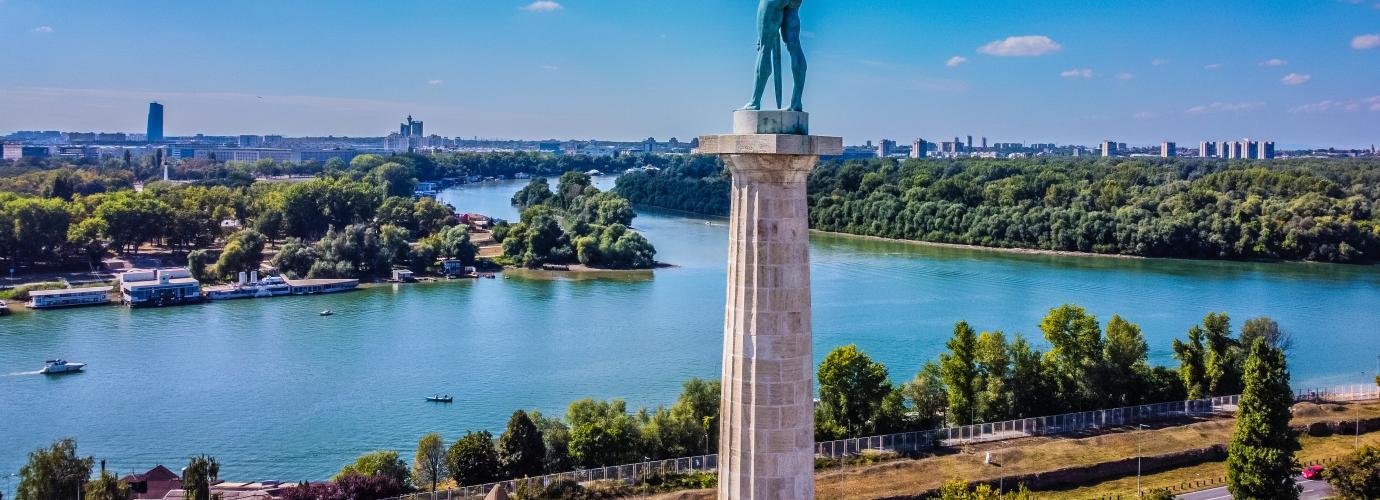Students Assessment
Formative assessment is the main form of assessment during general secondary education. It is made continuously for each subject, by using three forms of examination: oral, written and practical assignments (e.g. laboratory assignments). Assessment is based on several principles: objectivity, relevance, necessity of different assessment methods and techniques, fairness, timeliness, non-discrimination and respect for individual differences, age, capacities, needs, previous achievements and conditions.
The assessment of students’ knowledge (skills, performance, practical work, engagement) in all subjects is carried out through a five-point scale of both qualitative and quantitative examination marks: 5 (excellent), 4 (very good), 3 (good), 2 (satisfactory), and 1 (unsatisfactory).
Students’ behavior is graded on the same scale.
During one semester, each student must earn at least 3 marks for each subject, which serve as a basis at the end of the semester for forming the final grade. The final grade is proposed by the teacher and approved by the School Teachers’ Council. The grade point average (GPA) is calculated at the end of the first semester as an average of all final grades in that semester, and at the end of the school year based on all grades during that year. It also includes a grade for the student’s behaviour. There are 4 GPA categories: excellent (GPA>4.50), very good (3.50<GPA<4.49), good (2.50<GPA<3.49), satisfactory (GPA<2.49).
The GPA cannot be calculated if any of the final grades is 1 (unsatisfactory), in which case the student has to be re-assessed, as explained in the Progression of Students.
All grades, final grades, GPAs and any other notes on students’ assessment and progression are tracked through a school record. At the end of each semester and school year, students receive their own record cards with the same information.
Summative assessment is carried out on several occasions during general secondary education:
- Graduation exam (Матурски испит) assesses competences acquired during secondary school and is compulsory for all students at the end of the 4th grade of general secondary education. Students have to pass this exam in order to graduate from secondary school. It consists of two parts:
- General part: test and essay in the Serbian/Native Language and Literature for all students, and either Mathematics or Foreign Language, depending on the stream opted by the student (Social or Natural Sciences)
- Individual part: students have to write their graduation paper (Maturski rad) in the field of any subject they choose.
According to the Law on the Education System Foundations and the Law on Secondary Education, the School Council is responsible for determining the Graduation Exam Program and Implementation Details. The graduation exam marks (1-5, same as for formative assessment) do not affect further schooling; however, the passage of the exam (all parts passed with at least mark 2) is prerequisite for graduating from gymnasium.
- Grade exam (разредни испит) – see the Progression of Students section;
- Makeup exam (поправни испит) – see the Progression of Students section;
- Supplementary exam (допунски испит) for students transferring from one school programme to another.
All forms of assessment, including assessment criteria, are adjusted to students with disabilities in both regular and special education schools, according to their Individual Education Plans.
As announced by the Ministry of Education, Science and Technological Development, the general final exam will gradually replace the graduation exam, starting from the school year 2021/22. This new exam has been pilot tested during the school year 2019/2020. This exam will have the same role, but an additional one as well: it is planned to be used as criterium for enrollment on HEI.
Progression of Students
Students whose all final grades at the end of a school year are at least satisfactory (2) can proceed to the next grade and in most cases this is what happens. However, it is possible for a student under certain circumstances to repeat a grade. If a student has up to two unsatisfactory (1) final grades at the end of a school year, he/she is required to take a makeup exam (поправни испит) in each of these subjects. If such students do not pass this exam, they have to repeat the grade. In case they have more than two unsatisfactory final grades at the end of a school year, they automatically have to repeat the grade. 4th grade students cannot repeat the grade; in the case of unsatisfactory final grades, they continue taking their makeup exams until they pass.
Students who do not have marks at the end of a semester (e.g. due to absence during a semester) are obliged to take their grade exams (разредни испит) in respective subjects. Students who fail these exams undergo the same procedure as described above. The grade exam is also intended for home-teaching and distance-learning pupils.
Students whose capacities and achievements are high above average can, subject to the approval by the School Council and Principal, switch to accelerated education, which allows them to complete two grades in one school year. Their achievement is assessed through grade exams, under the same rules as described above.
Progression of students with disabilities is determined by their Individual Education Plans.
Certification
A student who completes all 4 grades and passes his/her graduation exam is considered to have graduated from a general secondary school. A general secondary school graduate receives Certificates on Grade Completion (separate for each grade), as well as the Secondary School Certificate, as approved by the Ministry of Education, Science and Technological Development and issued by the school.

